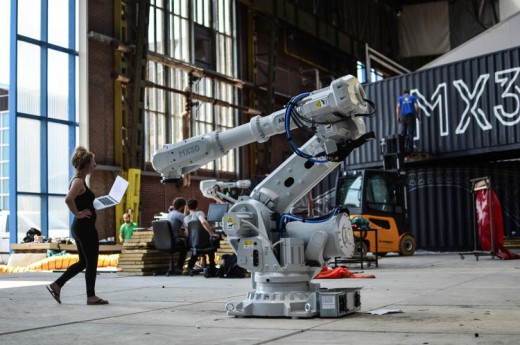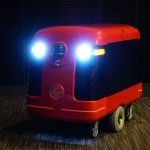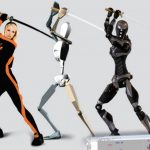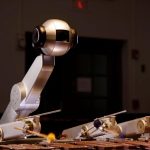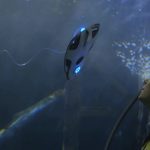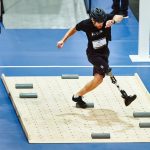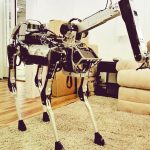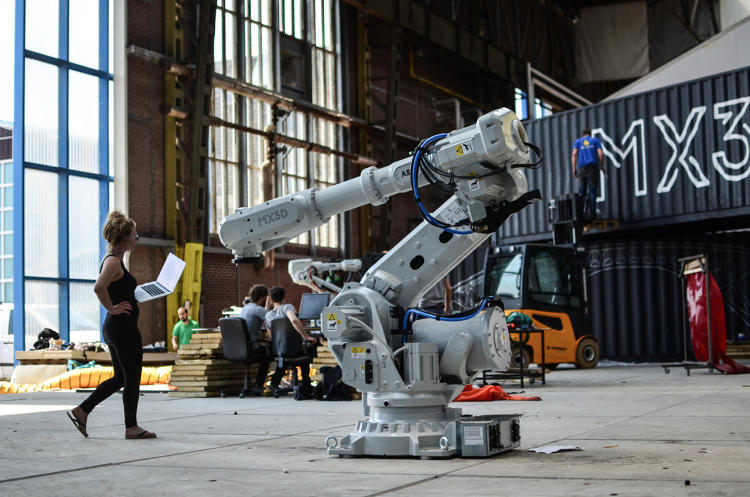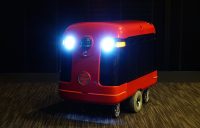This robot Can 3-D Print A metal Bridge In Mid-Air
Autodesk and MX3D have teamed up on a robotic that may in fact “draw” metropolis infrastructure, on area and with out human intervention.
June 12, 2015
In 2017, Dutch fashion designer Joris Laarman will wheel a robot to the brink of a canal in Amsterdam. He’ll hit an “on” button. He’ll walk away. And when he comes back two months later, the Netherlands could have a brand new, one-of-a-sort bridge, 3-D printed in a metal arc over the waters. This isn’t some proof-of-thought, both: when it’s achieved, it is going to be as sturdy and as some other bridge. individuals will have the ability to stroll backward and forward over it for many years.
that is the plan, anyway. To make his dream a reality, Laarman has created a brand new research and construction firm referred to as MX3D, which focuses on constructing six-axis robots that can 3-D print metallic and resin in mid-air. The tech allows for large-scale objects like infrastructure to be printed in the exact spot the place they are going to live, which has radical implications for the development trade and opens up a wealth of recent design prospects.
MX3D is not some excessive-tech idea; it in fact works. In February 2014, Laarman confirmed off the MX3D machine’s capability to 3-D print gravity-defying steel sculptures in mid-air. however printing out a bridge on area is a decidedly different challenge than 3-d printing one thing in a lab.
“We concept to ourselves: what’s the most iconic thing we could print in public that may blow their own horns what our technology is able to?” Laarman says in a cellphone interview. “This being the Netherlands, we made up our minds a bridge over an old city canal used to be a great choice. not only is it good for publicity, but when MX3D can construct a bridge out of skinny air, it will probably construct the rest.”
The completed bridge will be around 24 ft long, improve normal Amsterdam foot visitors, and have a fantastic, tricky design that appears a ways more handcrafted than the detailing on most bridges. as a result of 3D printing lets in for a granular keep watch over of detail that industrial manufacturing does not, designs can also be way more ornate, and nearly bespoke in look.
Most 3-D printers use resin or plastic to assemble objects. MX3D’s bridge can be made of a new metal composite that the college of Delft created. As strong as regular steel, it may be dolloped out through a 3-D printer, drop by using drop. the result? A 3-D printed bridge as sturdy as another, Laarman says.
As for the printer: it isn’t very similar to a Makerbot or another pc three-D printer. For one factor, it has no printer bed. as a substitute, it works like a teach. except as a substitute of working along present tracks, it could actually in fact print out its personal tracks as it goes along. An additive printing technology that is extra like welding than squirting out drops of plastic signifies that the tracks can go in any path: not simply horizontally, however vertically and diagonally as smartly. that allows the MX3D to move gaps, like the empty house between partitions, or the banks on a river, simply via printing its means throughout them. A helpful talent for a robotic to have if it needs to 3-D print a bridge, or some other huge structure, for that topic.
Laarman isn’t going this on my own. He grew to become to structure and engineering device company Autodesk to assist in giving MX3D some much-wanted smarts. in step with Maurice Conti, head of Autodesk’s utilized research Lab, Autodesk wished to work with MX3D as a result of it will lend a hand tackle different issues inherent to three-D printing.
Take error keep an eye on. Most 3-d printing happens in a print mattress under lovely steady prerequisites, besides, mistakes happen. A drop of additive gets misplaced, and since the printer doesn’t be aware of find out how to make amends for that, the next drop gets delivered to the flawed position, too. the consequences of such mistakes vary from the comical to the Lovecraftian. no longer exactly the roughly thing you need on a bridge which is meant to handle foot site visitors. since the MX3D might be building in public, it wants in an effort to atone for a wide range of error, from giant fluxes in temperature that amplify the steel to children hurling beer bottles at the robot.
“Robots tend to think that the universe is made of absolutes, even if that is now not proper,” Conti says. “So we wish to software them to have real-time feedback loops, and adapt in real-time, without even being advised to.”
which is a massive challenge, however one Autodesk thinks is value solving. now not just because the advances would also be appropriate to other sorts of 3D printing, but also as a result of it opens the door to a great future. “think about some day at some point, just going somewhere, dropping off a robot, and coming back two months later to have this large piece of infrastructure there, without any human intervention at all!” Conti marvels. The MX3D bridge project is a chance for Autodesk to not simply flex its synthetic intelligence muscle tissues, but to check the ends up in the actual world.
When it can be built over the route of two months in fall of 2017, the MX3D’s finished bridge (it does not have a name but, and even the exact location remains to be being determined) will be the first step toward that future. If it really works, who knows what’s subsequent? Ten years from now, we may watch skyscrapers be constructed by using massive 3D printing cranes, lifting themselves up as they squirt massive industrial steel girders beneath themselves.
however the challenges beforehand are also nice. regardless of teaming up with some of the best possible bridge engineering companies within the business, and operating a lot of take a look at, MX3D will not recognize if their great plan will work unless they in reality do it. With two years to go sooner than they’re prepared, rather a lot is riding on their preparations, and their work with Autodesk…not least of which might be the first people who in reality stroll over the primary three-D printed bridge on the planet.

















(130)

